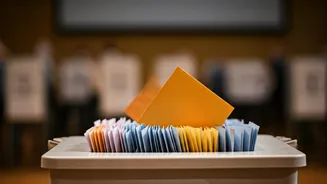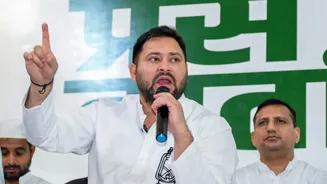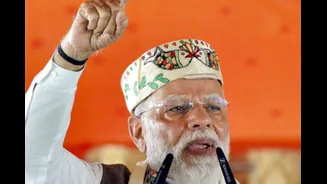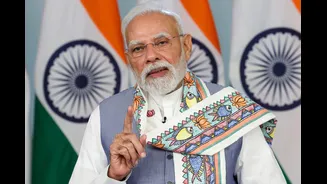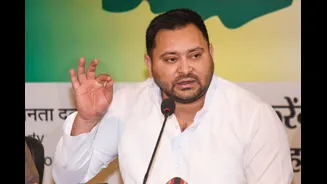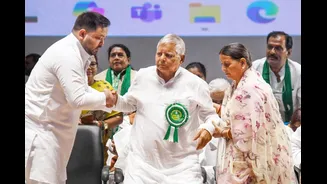Political Landscape Unveiled
Bihar's political scene is known for its dynamic nature, shaped by caste, economic factors, and regional dynamics. The upcoming elections will likely feature
a clash between major political entities, including the ruling alliance and the opposition parties. The strength of the current ruling coalition, along with the strategies of the opposition to challenge the existing government will be key determinants. The influence of regional parties and their ability to forge alliances or act independently could also be a significant factor in deciding the final outcome. The interplay of these diverse elements will set the stage for a fiercely contested election in 2025, where voters' choices will determine Bihar's future political direction. The election results will likely reshape the governance and policy direction of the state. Analyzing the evolving political environment helps to recognize the diverse and complex interactions that determine electoral results, from public sentiment to coalition formation.
Key Parties and Players
The main contenders in the Bihar elections of 2025 are anticipated to be the established national parties and regional powerhouses. The ruling coalition, comprising various parties, will likely aim to retain its hold on power by highlighting its past achievements and future development plans. The primary opposition parties, on the other hand, will strive to gain traction by critiquing the current government's performance and presenting alternative strategies to improve governance, and proposing different perspectives on core issues like employment, and infrastructure. Key political leaders from these competing parties will take center stage, becoming influential in shaping the public narrative through rallies, press conferences, and strategic campaigns. The strategies, alliances, and public appeal of these leaders will significantly influence voter preferences and the final election results. Each party's ability to effectively communicate its vision to the public, and its capacity to engage with the populace through outreach programs, will be vital in securing voter support in this important electoral contest.
Dominant Election Issues
Multiple crucial issues are expected to dominate the 2025 Bihar elections. The state's economic progress, encompassing job opportunities, industry, and infrastructure development, will be a primary concern for the voters. The current state of education, healthcare, and public services will likely draw significant public scrutiny, as residents assess government performance in these fundamental areas. Social justice and governance will also feature prominently, with discussions about inclusivity, equal opportunities, and efficient administration. The handling of these critical topics by various political entities, along with the proposed strategies to tackle them, will be crucial. Candidates will be pressured to formulate clear and actionable plans that meet the demands of the electorate. Public discussions, debates, and policy pronouncements will be directed towards persuading voters by reflecting their anxieties and aspirations. The ability of the political parties and candidates to successfully address and propose viable solutions for these significant issues will ultimately determine voter choices.
Campaign Strategies Examined
In the lead-up to the 2025 elections, political parties will use a variety of strategies to engage with voters and boost their prospects. Expect to see parties using large-scale rallies, street meetings, and media advertisements to amplify their messages and connect with the electorate. Digital platforms and social media will also play a pivotal role, enabling campaigns to reach younger voters. Grassroots initiatives, community involvement, and targeted outreach programs will be implemented to connect directly with various voter groups. The choice of campaign themes, candidate selection, and messaging will be carefully designed to reflect the most pressing issues. The success of each party's campaign will depend on its capacity to adapt to the changing political climate, effectively convey its vision, and connect with the electorate through innovative methods. This approach will be essential to ensure that the parties are ready to face the challenges and take advantage of the opportunities presented in the electoral campaign.
Voter Demographics Analysis
The demographic makeup of Bihar's population, encompassing caste, gender, age, and socioeconomic status, will greatly influence the voting dynamics in the 2025 election. Each demographic group has different concerns and needs, which will likely be reflected in their voting choices. Understanding these diverse perspectives and tailoring outreach efforts to specific demographics will be crucial for political parties. The changing patterns in voter behavior, along with shifting social dynamics, will need to be thoroughly analyzed to assess potential results. The level of voter participation, and the factors that influence it, will be critical. Election outcomes may be significantly influenced by how well political entities recognize the demographic realities of Bihar. Through this approach, each group can get access to information that impacts their decisions. Understanding the complexity of these demographic trends is vital for forecasting the results and appreciating the dynamics of the election.
Election Outcome Prediction
Predicting the outcome of the Bihar Assembly elections in 2025 involves examining a variety of factors, including the popularity of political parties, the major issues, and the impact of the voter population. The strategies and efficiency of the political parties' campaigns will be vital, as will their capacity to engage with and affect different voter groups. Analyzing pre-election surveys, opinion polls, and statistical data can offer insights into public perceptions and voting trends. Unexpected events and last-minute developments could also influence voter choices and influence the election results. As a result, forecasting the election's outcome requires a comprehensive approach. It’s important to incorporate insights from multiple sources while recognizing the inherent unpredictability of the electoral process. The final results will reveal the voters' decisions and the political landscape of Bihar. The final results will shape the state's political direction for the next term.
